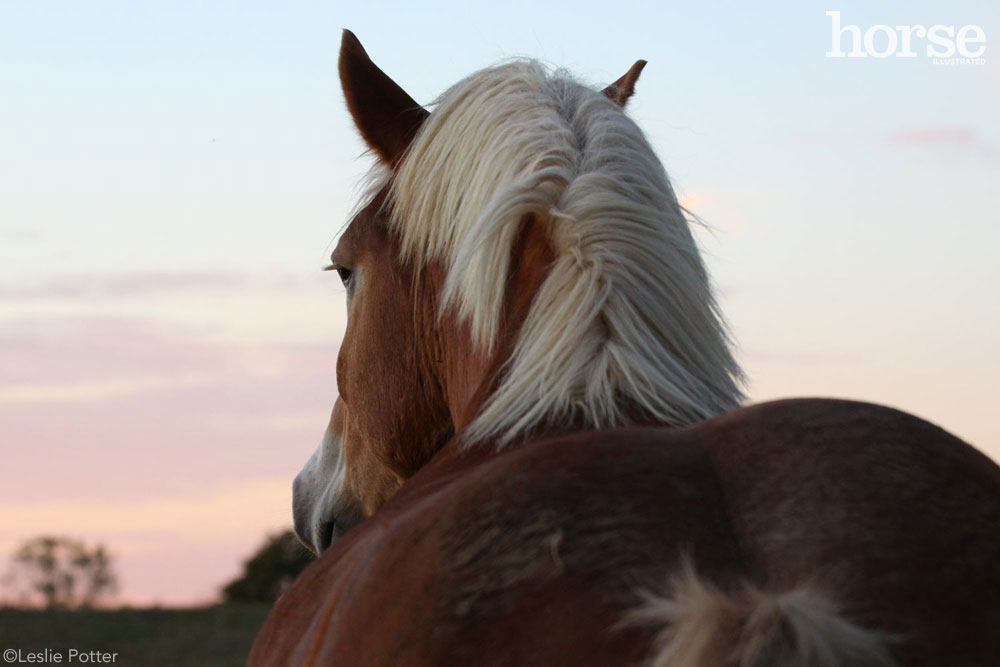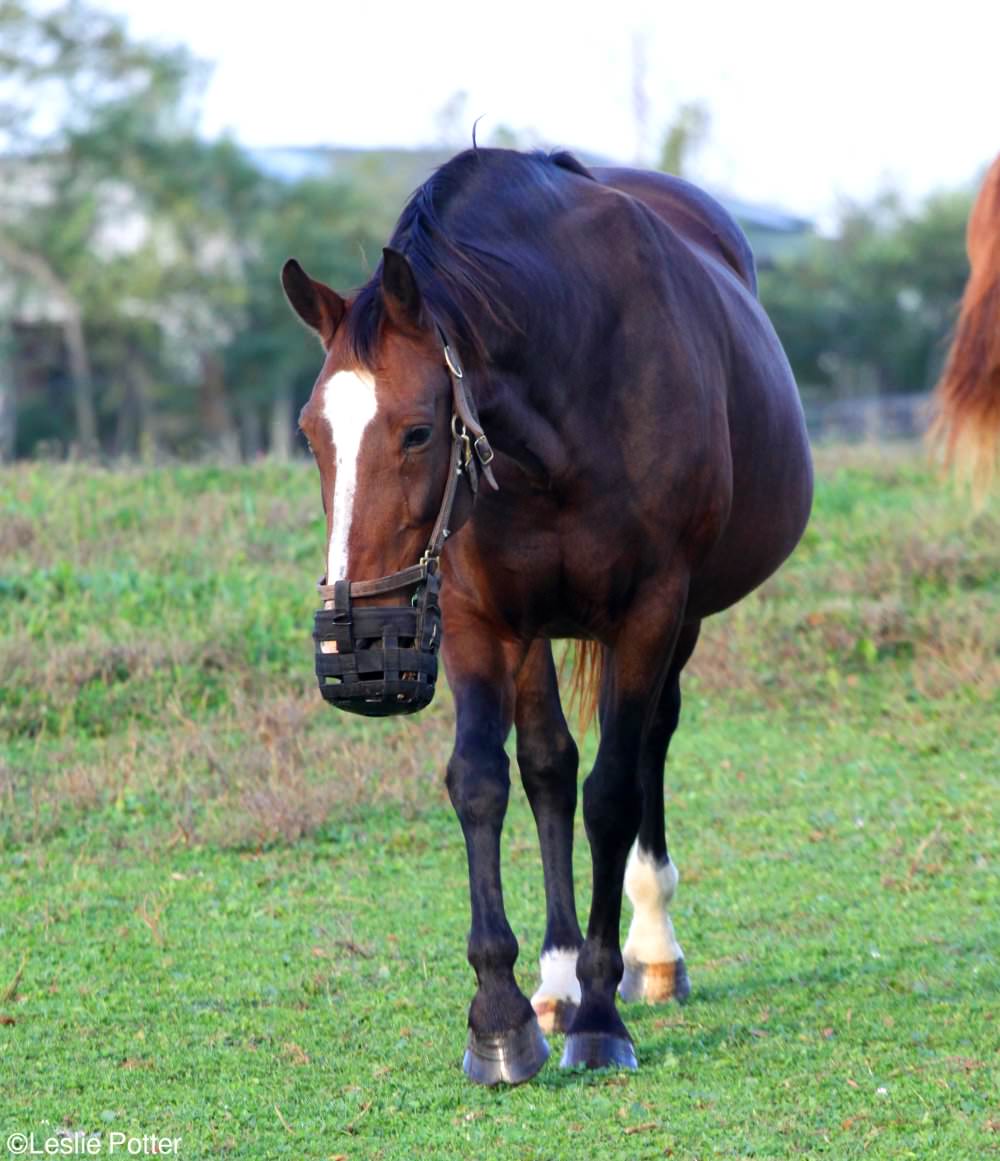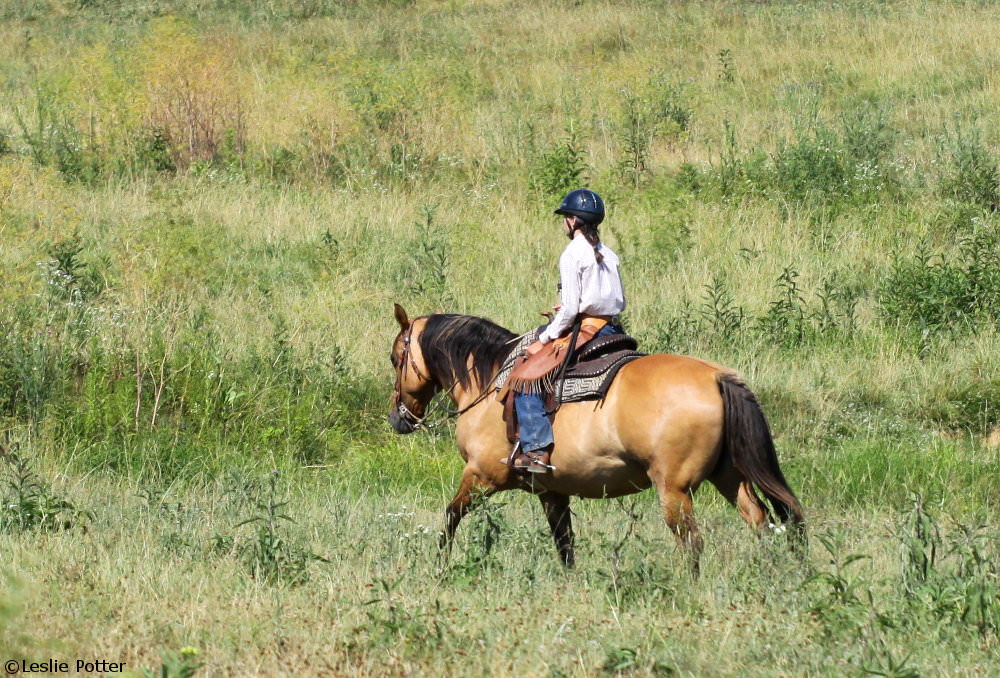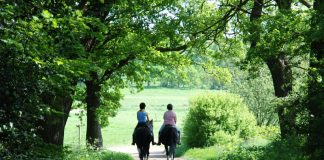
The short answer is: yes.
Why is Fat Bad?
Physically, added fat makes it harder for a horse to shed heat, which can lead to heat stress, particularly in the summer or during exercise. It also puts more strain on his joints, which can worsen the effects of mild arthritis and reduce performance.
It may also lead to formation of lipomas, fatty balls on stalks within the abdomen that can wrap around the intestines and cause a strangulation colic. This requires surgery to correct. No thank you!
Obesity is also the main contributor to developing equine metabolic syndrome (EMS). EMS generally entails insulin resistance (like type 2 diabetes in humans) and chronic laminitis—painful inflammation of the hooves that is extremely uncomfortable for the horse.
How Do I Know if He’s Fat?
You probably know if you have a horse that’s an easy keeper, because you’ve never seen his ribs showing—in fact, you probably can’t even feel them if you go out right now and check.
Other signs include a thick, cresty neck; a crease along the top of the hindquarters; and an indentation when the girth is tightened. Time to lose some weight!
“But it’s not his fault,” you say. “He’s a pony/warmbood/Mustang/Morgan,” et cetera. While some horses are just born with a “thrifty gene” that you can’t undo, that’s no excuse for letting your horse suffer from health problems.
With that said, let’s work on controlling the controllables.
Controlling Diet
There are three main calorie bombs that might be causing the problem. Think carefully about your horse’s diet: is he getting any of these? Pasture, grain/sweet feed, and legume (alfalfa) hay.
Start by looking at your hay; it’s pretty simple to switch from alfalfa to grass hay. If you can feed a more mature type (less soft and green, more stemmy), while still keeping an eye on the quality (fresh and free of weeds), this is the best starting point.
Taking it one step further and feeding his hay out of a small-hole net will keep him occupied longer, reducing the incidence of gastric ulcers and behavior problems. Keep small meals coming, preferably three times per day.
Next, let’s look at grain, more correctly termed “concentrate” in the horse-feeding world. This refers to a concentrated source of calories, which can include different grains, fats, and sometimes beet pulp. If your barn just goes down the line dumping a scoop of the same grain to every horse, you need to make sure he stops getting it.
A much better choice for the easy keeper horse is ration balancer, which comes in the same type of 50-pound bag, but is fed in a much smaller serving of only 1 to 2 pounds per day. It contains all of the vitamins and minerals needed to meet your horse’s nutritional requirements, without all of the calories. Provide water and a salt block free-choice at all times.
Whatever you do, do not starve the horse until he starts losing weight. This will slow down his metabolism—the opposite of what you want—and there is a chance he could get liver damage from a condition called hyperlipidemia. This is where an obese horse’s body mobilizes fat deposits, putting undue strain on the liver.

Controlling Grazing
The last stop on the intake inventory is pasture. If your horse goes out on pasture and blows up like a tick when the spring grass comes in, he will need to be fitted with a grazing muzzle. There are several types available—but the most important factor is that it stays on.
Studies have shown grazing muzzles can reduce grass consumption by over 80 percent, although some crafty horses are able to still devour almost unchecked. If this is the case, your horse should be moved to a dry lot, where he can eat his hay in a small-hole net instead of grazing.
If you decide to turn your horse out for a shorter time span, such as one hour per day, be aware that horses can gobble up a tremendous amount in this short of a time if they have been deprived of grazing beforehand. If you do go this route, use a muzzle, and consider turning out in the morning when the sugar and starch content of the grass is lowest.
Adding Exercise
Just like with people, the magic secret to weight loss is diet and exercise. Even if your horse gets turned out on acreage, he’s unlikely to run laps and exercise himself if he’s overweight.
Start your horse on a gradual program of long, slow distance. Ride at the walk and trot, gradually increasing the amount of exercise time. If he is sound for it, begin adding in some canter after the first few weeks.
If you are short on time, still make an effort or get some help so your horse exercises every day. Even 15 minutes of trotting on a longeline will do wonders when you need to pop in and out of the barn quickly.
Your horse should be able to fully recover within 30 minutes (pulse and respiration) from whatever activity you decide on.

Progress
Use the Henneke Body Condition Score system monthly to track progress. Scores range from 1 (emaciated) to 9 (obese, with pads of fat in specific places). The goal score is a 5 or a 6. Be sure to actually put your hands on the horse to feel his neck, ribs and loin for diminishing fat stores.
If your horse has EMS already, work with your veterinarian to closely monitor diet and weight.
Managing Editor HOLLY CACCAMISE has an M.S. in Animal Science with a specialization in equine nutrition and exercise physiology.
This article about nutrition for an “easy keeper” horse originally appeared in the August 2017 issue of Horse Illustrated magazine. Click here to subscribe!





